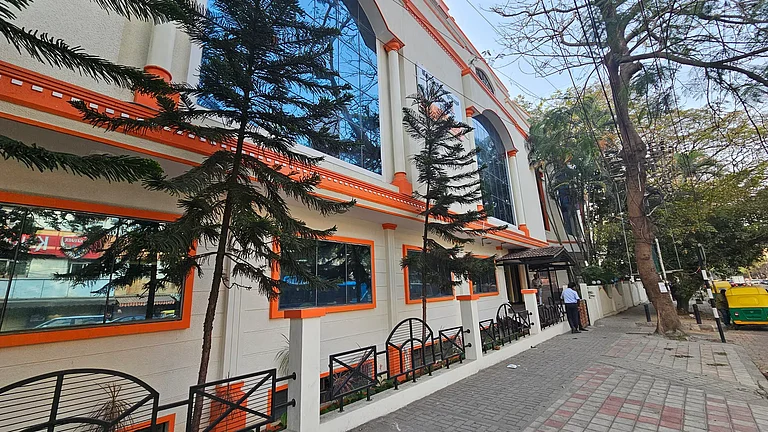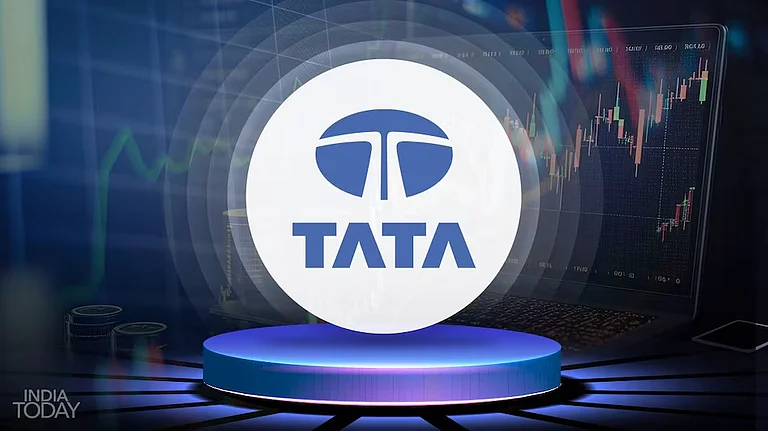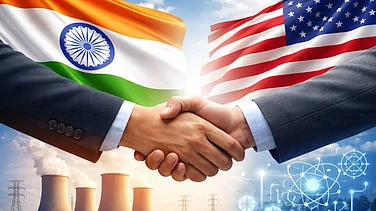On 14 July, 1789, an angry mob attacked Bastille, the state prison in Paris which had come to represent the dictatorial rule of the then monarchy. The event gave birth to one of Europe’s greatest revolutions, the French revolution, that overthrew the monarchy by setting up a republic based on the ideas of ‘Liberté, égalité, fraternité’ (liberty, equality and brotherhood).
Over 200 years later, the month of July witnessed another country, this time in Asia, come close to having its Bastille moment. On July 9, hordes of people stormed Sri Lankan president Gotabaya Rajapaksa’s official residence demanding his resignation amid a growing economic crisis in the island nation. In the videos and images that went viral, Sri Lankan protestors can be seen jumping into the pool for a swim, taking over the kitchen, using the gym and even sleeping on the president’s bed in the colonial era state house. Mobs had also set Prime Minister Ranil Wickremesinghe’s house on fire.
The protests also left several people injured. AFP quoted a spokesperson of Colombo's main hospital as saying that three people were being treated for gunshot wounds. The incident forced Rajapaksa to announce that he would resign.
Why Are Sri Lankans Angry?
Sri Lanka is witnessing its worst economic crisis in the last 70 years. It is struggling to import essentials like medicine, fuel and food and is also dealing with soaring inflation. Its foreign exchange reserves have depleted. The government was holding discussions with the International Monetary Fund (IMF) for a $3-billion bailout.
Sri Lanka's chronic inflation problem by Digital Subs
Since it did not have enough foreign currency to pay for imports, including fuel, it announced halting of private, non-essential sales of fuel till July 10, becoming the first country to do so since the 1970s. A few ago, Sri Lankan officials said that the country had less than a week’s supply of fuel left to run essential services such as medical vehicles, trains and buses. Schools have been shut down and its working population is now working from home.
Fuel and food shortage has led to soaring inflation. Sri Lanka’s year-on-year inflation reached a record 54.6 per cent in June. Rampant power cuts and unavailability of essential medicines have brought its health infrastructure to the verge of collapse.
The Sri Lankan economic crisis was exacerbated by deep tax cuts promised by President Gotabaya Rajapaksa as part of his campaign during the 2019 presidential elections. It was enacted right before the pandemic struck which further destroyed parts of its economy. Being an economy that was majorly dependent on tourism, ghastly bomb attacks on churches in 2019 had scared off tourists before the pandemic wiped off tourism completely. For an economy in decline, the final nail in the coffin was a switch to organic agriculture which reduced the yield, causing food shortage in the country.
In a 2019 working paper, the Asian Development Bank had said: “Sri Lanka is a classic twin deficits economy. Twin deficits signal that a country’s national expenditure exceeds its national income, and that its production of tradable goods and services is inadequate.”
The country has also defaulted on its debt for the first time in its history. A month’s grace period to repay $78 million worth of unpaid debt interest payments expired on Wednesday. P Nandalal Weerasinghe, governor of Sri Lanka’s central bank, said that Sri Lanka was in "pre-emptive default". Defaults take place when a government fails to meet its debt payments to creditors either in part or full. Defaulting on payments has a detrimental impact on a country’s reputation with investors.
"Our position is very clear, we said that until they come to the restructure [of our debts], we will not be able to pay. So that's what you call pre-emptive default. There can be technical definitions... from their side they can consider it a default. Our position is very clear, until there is a debt restructuring, we cannot repay," Weerasinghe was quoted as saying.
Any country that defaults on payments finds it difficult to borrow from international markets which dents the value of its economy and currency. Sri Lanka is aiming to get its debt to foreign creditors, worth over than $50 billion, restructured so that its repayment can be easily managed.
The island nation’s present situation reminds one of what India went through in the 1990s. Except, India managed to salvage the situation before it reached a Bastille-like situation.
What Happened In India In The ’90s?
While it is largely held that the Gulf War which commenced in 1990 and the resultant oil price shock brought India to its knees, in reality, it was more than a decade’s imprudence that had led the economy to the brink of collapse. India’s twin deficits widened persistently in the 10 years that led up to the liberalisation of the Indian economy.
Between 1980-81 and 1990-91, India’s domestic public debt grew from 40 per cent of the GDP to 55 per cent. External public debt rose from 8.7 per cent of the GDP to 12.7 per cent, when exports contributed less than 8 per cent to India’s GDP back then. Import liberalisation, which had begun 1976 onwards, had resulted in the rapid growth of imports, largely of capital and intermediate goods but it was not balanced by a commensurate rise in export growth.
On the domestic front, political compulsions meant a rapid rise in the food and export subsidies bill. The situation further worsened because of factors like greater interest payment burden due wider primary deficit and higher cost of borrowing, employment and wages growth in the public sector, financial assistance to loss-making public sector firms and weak government revenue growth.
By 1991, India was on the verge of sovereign default. The Gulf War also resulted in a fall in remittances from Indian workers abroad. India’s forex reserve fell alarmingly and was at less than $6 billion—a figure that could have met only about two weeks of the country’s import demand.
The biggest challenge facing then Prime Minister Narasimha Rao was to save India from the embarrassment of sovereign default—something that India had not faced till then.
The country took two immediate measures to escape the economic quicksand. First, it devalued the Indian rupee to make exports more competitive. The Reserve Bank of India (RBI) and the government opted for a devaluation of the Indian currency in two steps. The rupee was first devalued by about 9 per cent against other major currencies on July 1, 1991. This was followed up with another round of 11 per cent devaluation two days later.
The second big step taken by the Rao government was to pledge gold holdings to increase forex reserves. The RBI pledged India’s gold reserves with the Bank of England in four lots between July 4 and July 18, 1991. India raised $400 million this way. In May that year, the State Bank of India had also sold 20 tonnes of gold to the Union Bank of Switzerland, raising roughly $200 million. The IMF came to the rescue with emergency loans worth $2 billion in two lots earlier that year.
Lessons From The Historic Budget
While presenting the 1991-92 Union Budget, then Finance Minister Manmohan Singh had said, “‘No power on earth can stop an idea whose time has come.’ I suggest… that the emergence of India as a major economic power in the world happens to be one such idea. Let the whole world hear it loud and clear. India is now wide awake. We shall prevail. We shall overcome.”
Singh’s budget was a reiteration of several structural reforms that the government had undertaken in the previous weeks. It announced sweeping changes to its licensing policies and brought out a new trade policy to boost exports. After the huge devaluation of the rupee, the government stopped its export subsidy policy. Private sector was permitted to import and it did away with the mandate of routing imports through state-owned companies.
On the eve of the 1991 Budget, India announced its new industrial policy. It permitted automatic approval for foreign direct investment up to 51 per cent—the earlier cap was 40 per cent for foreign equity investments. It did away with the License Raj regime and made entry of businesses and their restructuring easier by allowing mergers and amalgamation.
Until then, the government was in the business of producing everything—from watches to cars. The new industrial policy restricted the public sector’s monopoly to a handful of strategic sectors. The budget allowed private sector participation in mutual funds and eased norms for investment by non-residents. Corporate tax rates were increased by 5 percentage points to 45 per cent and tax deducted at source was announced for financial transactions like bank deposits. Prices of fertilisers, petrol and cooking gas were increased and sugar subsidy was discontinued.
From being on the verge of collapse to making exports competitive, India’s journey has been a long and arduous one. How long Sri Lanka will take to turn its economy around, only time will tell.






























